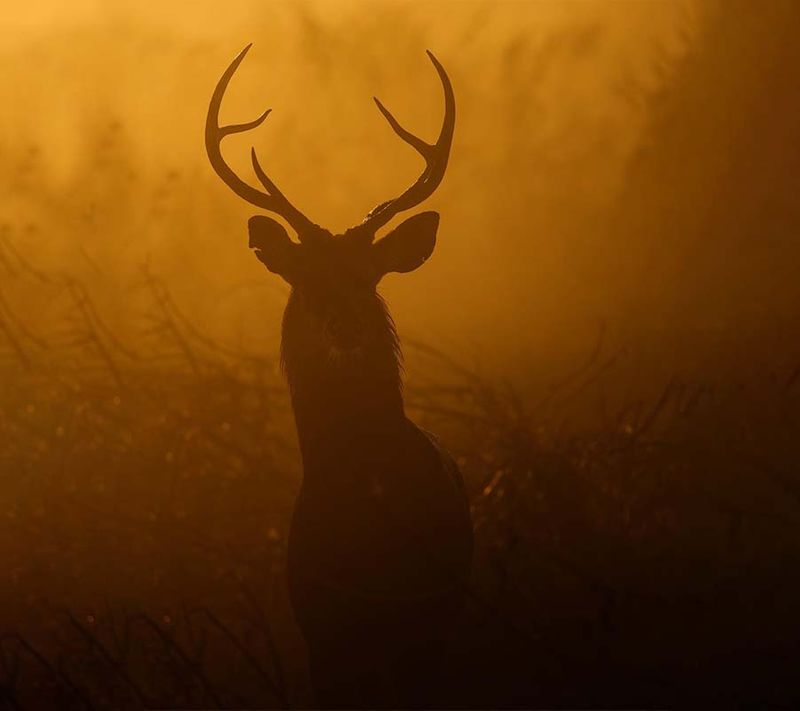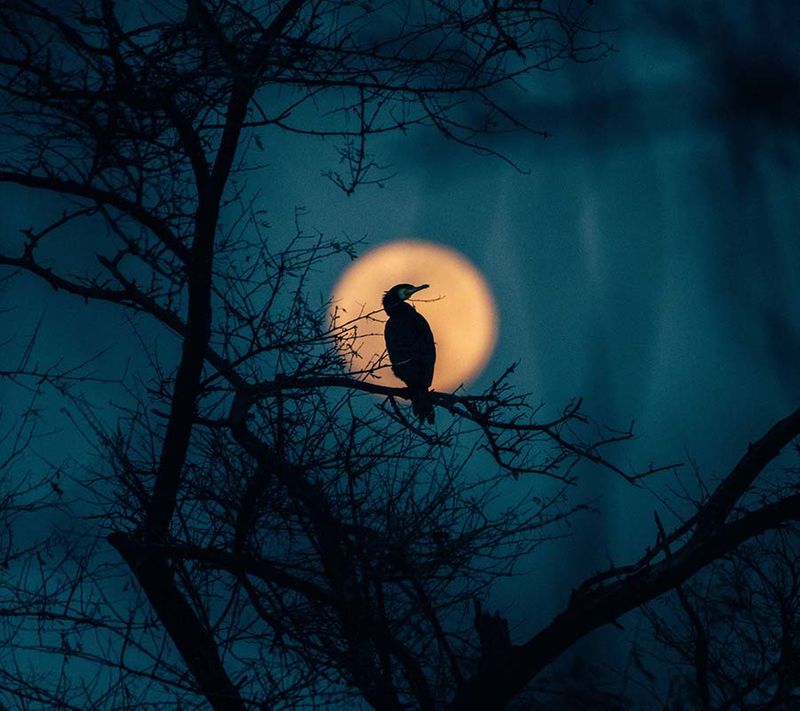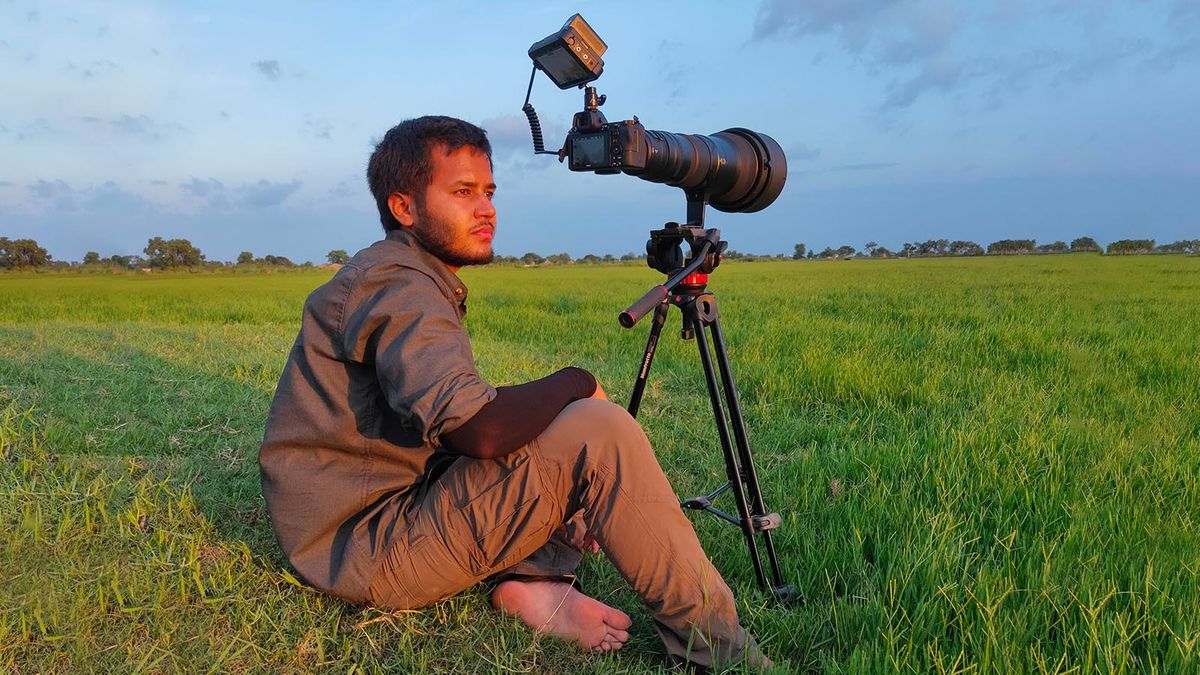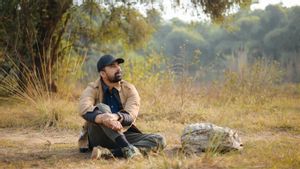So much of the world, especially nature, continues to be unravelled and brought to us through photographs that fill us with awe. However, sometimes, it shocks and thrills us to find out that we also play a part in the cohesive ecological whole and are not very separate from the wild. For individuals like Abhinandan Sharma—whose childhood backyard granted him views to the Bharatpur bird sanctuary in Rajasthan—it became a natural trait to become a voice of nature.
A fourth-generation wildlife photographer and filmmaker, Abhinandan developed a keen sense of animal behaviour and developed his instincts around the same since his initial period, “I was very lucky to be born in a family of photographers and my family has practised photography for over 100 years now. My great grandfather, Nathan Lal Sharma, was the photographer to the Maharaja of Bharatpur and since then the knowledge has been passed on through generations. Before teaching photography, they taught me how to observe and how to be in nature.”
The call of the wild

A major part of Abhinandan’s growing up years was spent out and about in the famous Keoladeo National Park—a paradise of birds that his family has been photographing for decades. “I remember growing up and going to the national park at a very young age and being surrounded by nature. Being there and just being able to observe my father and my uncle work in the field taught me a lot of things. The knowledge about the park and how it has changed over the years also helped shape my ideas about this park,” he shares. His ancestral family adventures and stories, and how they then worked with only analogue gear, fascinated him even more.
Although he is blessed with the necessary trait of being ‘obsessed with wildlife and nature’ from childhood itself, his sharp eye for detail and keen observation made him gravitate towards arts even more. Reminiscing an incident when he was in the sixth standard, Abhinandan recalls a moment as the turning point of his journey. “One day after coming back from school, I spotted a nest of a bird called green barbet. I had a small video camcorder that belonged to my father and started using it to document the bird's life. Every day I used to come back from school and observe the bird in its nest. I used to look forward to spending more and more time with the bird, and I feel that’s where I got hooked on wildlife and nature. I haven't been able to look back since then,” she says.
And so, his passion for documenting wildlife began with just a pair of binoculars. “I think it was a blessing because just by observing the behaviour I learnt a lot, which made photographing wildlife easier. I was taught not to be afraid of animals and respect them and their world,” he shares.
Capturing fleeting memories

Documenting wildlife isn’t easy. Years and years can pass by for someone to hone their skills and capture that single brilliant shot that speak volumes. “One day, inside the Bharatpur bird sanctuary, I was resting under a tree when suddenly I was woken up by the alarm calls of Indian parakeets. When I tried looking, I saw them attacking an Indian monitor lizard. As soon as I saw this, my instincts took over—in under 10 seconds I was fully alert, prepared with my camera laying on the ground. They could have gone anywhere but headed straight towards me and that’s how I got this shot!” Sharma shares. This particular shot had also won him a National Geographic Award.
“I didn’t plan the shot beforehand, I think sometimes just ‘being present’ is enough. As a wildlife photographer, I always have to be prepared for the unknown. At times, I just have to be present at the moment and creativity just happens by itself. I believe any moment which tells a story and you feel for that moment with your heart—that should be enough,” he adds. The dynamic nature of the subject requires wildlife photographers to essentially have a lot of patience and be prepared to capture the shot when something special does happen, sometimes out of the blue too.
With a Bachelors degree in Films from the University of Mumbai, Sharma views the medium of cinema and documentaries as a necessary platform for the conservation of wildlife. “I feel that in today's time we need more impactful films—those that can bring about a change. I want to make work that is more personal to me so that people can relate to it and possibly become more compassionate for nature.” In documentaries, films, or photographs—visuals speak volumes; and in matters of wildlife, documentation helps in transferring knowledge while paving the way for effective conservation activities in the future. “My family, who had been in it for years, also played a role in conservation through their use of photography,” he quips.
Tryst with Safari India
Abhinandan’s passion for wildlife led him to work on a variety of projects across India. He’s done wildlife films, documentaries, and recently even shot for Safari India, a wildlife and travel show, which is Zee Zest’s latest production. “Shooting for Safari India was an absolutely beautiful experience. We were out there in the wild for a month and since we were also shooting wild animals, every second mattered to us. It was a great learning experience for me and quite inspiring to see everyone work so hard to make this show. I miss it already!” he shares.
His most memorable encounter on set was when the crew had been tirelessly waiting to capture a flock of Hornbill birds, but with no luck. However, just before dark, Sharma clicked a ‘cherishing’ image after being alarmed by the distinct sound of the bird’s wings.

“When we were inside Pakke Tiger Reserve in Arunachal Pradesh, we had to shoot the hornbills (the place is quite known for them). But, the whole day had passed and we hadn't seen a single hornbill yet. The day was nearing sunset and we were supposed to leave in another 30 minutes but suddenly we could hear the sound of the wings coming from a distance. And soon, we saw huge flocks of hornbills flying above us as the sun was setting. It was a perfect scene with the Himalayas as the backdrop, and this is one moment that I will cherish for all of my life. Photographers and filmmakers usually spend months and years filming, but we were really blessed to spot and film them all in just a month's time,” he shares.
Whilst being in the wild, there is no guarantee of spotting any animal, but that, Abhinandan Sharma concludes, is the beauty of it. “Nature presents itself to me in ways I cannot imagine and I just have to document that moment in time. I think one has to find a balance between being in the present and the urge to document wildlife.” Being mindful is definitely a quality to champion for any budding wildlife photographer.





